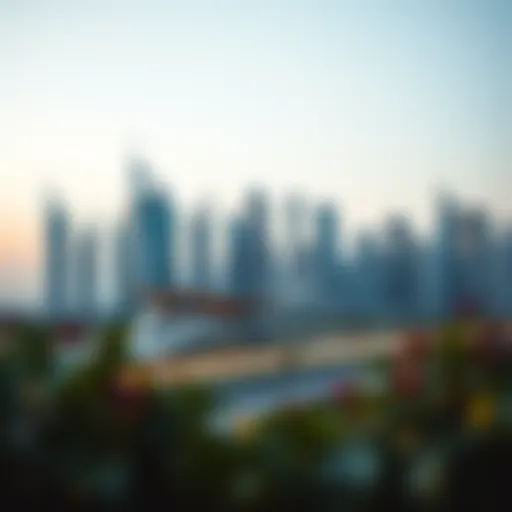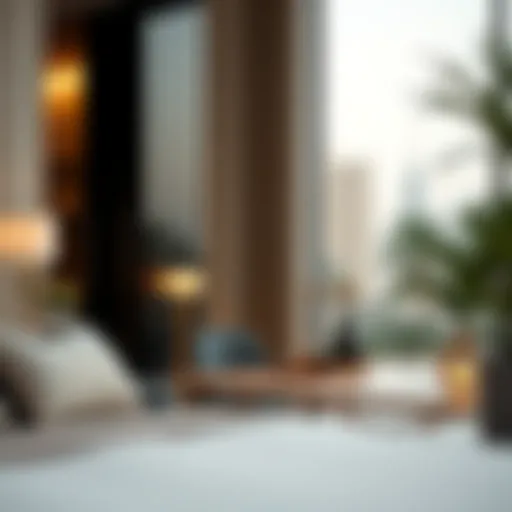The Meraki Experience in Dubai: Insights and Impact
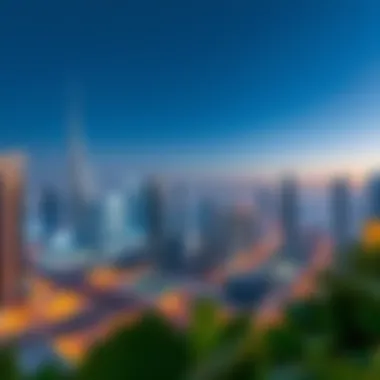
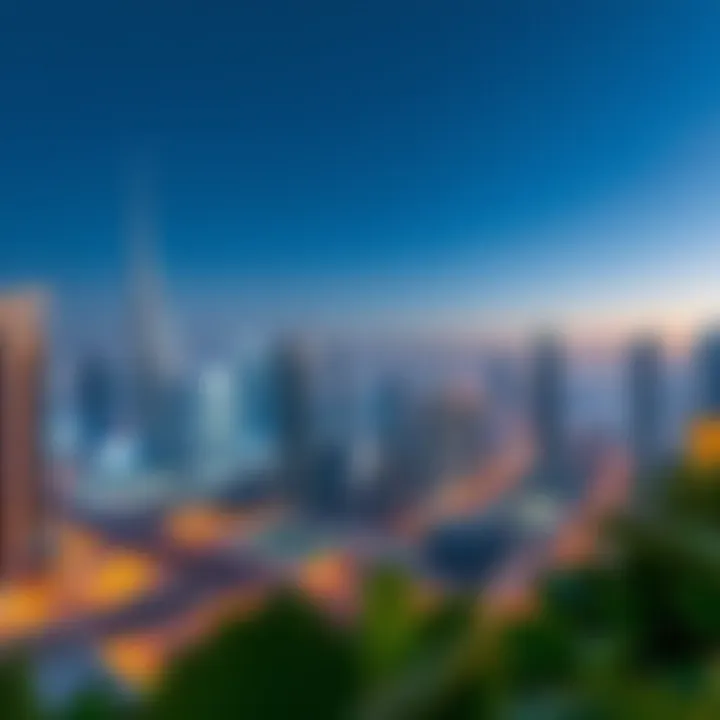
Intro
In an ever-evolving city like Dubai, the concept of Meraki—rooted in dedication, love, and creativity—plays a pivotal role in shaping various sectors, notably real estate. This city is a dazzling tapestry, woven from ambition and hard work. As we delve into this intricate fabric, it becomes clear how Meraki influences not just architectural endeavors but also the lifestyles of its residents.
Real estate in Dubai is far more than mere investment; it's about forging communities and enhancing quality of life. Homebuyers and investors alike should take a moment to appreciate how the philosophy of Meraki permeates every aspect of property development, ensuring that each project resonates with the essence of those who inhabit it. Here we will explore the market dynamics, investment opportunities, and the integral aspects that define the Dubai real estate experience.
Market Insights
Current Trends in Dubai Real Estate
Understanding the current trends in the Dubai real estate market is crucial for anyone looking to make savvy investments or find the perfect home. The following key attributes characterize the landscape today:
- Population Growth: A steady influx of expats and professionals is driving demand for property, leading to a bustling rental market.
- Sustainability Focus: More projects are prioritizing eco-friendly designs and sustainable practices, which appeal not only to investors but also to an environmentally conscious clientele.
- Luxury and Affordability: A varied offering from ultra-luxury villas in Palm Jumeirah to more affordable apartments in emerging areas such as Dubai Creek Harbor reflects the need for diversity.
- Technology Integration: Smart home technology is becoming a standard feature, enhancing convenience and attracting tech-savvy renters and buyers alike.
In light of these trends, it’s vital for potential investors to recognize the shifting dynamics and adapt their strategies accordingly, as neglected aspects can lead to missed opportunities.
Analysis of Future Predictions
As we gaze into the crystal ball, several predictions paint a promising picture for the Dubai real estate market:
- Continued Growth: Forecasts indicate growth, particularly in areas that are becoming cultural and commercial hubs, drawing attention from local and international investors. Tools like Statista provide insights on market analysis and projections for various sectors.
- Regulatory Changes: The government is continuously adjusting regulations to make it easier for foreign investors to enter the market. Changes could enhance transparency and bolster confidence.
- Cultural Integration: Integrating cultural elements into new developments can attract a diverse demographic, fostering community growth and enriching the overall Dubai experience.
"In Dubai, the spirit of Meraki meets the shifting tides of market trends, creating a unique opportunity for those who are willing to embrace both tradition and innovation."
Investment Strategies
Tips for First-Time Investors
Investing in property for the first time can be daunting; however, a structured approach can ease the process. Here are some practical tips:
- Research Thoroughly: Understand neighborhoods, price trends, and development plans. Use resources like the Dubai Land Department for accurate data.
- Engage a Trusted Agent: A knowledgeable real estate agent can navigate the complexities and help find properties that align with your vision.
- Understand Local Regulations: Laws in Dubai can differ significantly from those in other countries. Familiarize yourself with the legal requirements before making a purchase.
- Consider Long-Term Investment: Popularity and value can fluctuate; consider properties that will appreciate over time.
Understanding Property Valuation
A fundamental aspect for investors is grasping how to value properties accurately. Several factors come into play:
- Location: Proximity to amenities and future developments significantly affects property value.
- Condition and Age: Newly built structures will generally command higher prices, but older properties may offer investment potential through renovations.
- Market Conditions: Keeping an eye on market sentiment and trends can help in determining the right time to buy or sell.
Understanding these elements can empower investors, allowing them to make informed decisions that resonate with the ethos of Meraki—putting love and creativity into every transaction.
Understanding Meraki
In exploring the Meraki experience in Dubai, it is vital to grasp the essence of the term itself. To understand Meraki is to appreciate a philosophy deeply rooted in personal connection and emotional investment. As we delve into this topic, we shall uncover how this concept informs various aspects of the Dubai real estate market, from development strategies to lifestyles of residents.
Meraki embodies the spirit of infusing one’s heart and soul into one’s endeavors. It encourages a personal touch in every action, essentially transforming mundane activities into meaningful pursuits. When applied to real estate, this idea leads to spaces that reflect authentic experiences, where every brick and design choice tells a story.
Definition of Meraki
Meraki is a Greek word that has no direct English equivalent but encompasses the idea of doing something with passion, creativity, or love. Whether it’s making a meal or designing a building, the concept suggests that the touch of the maker—infused with their unique essence—creates a product that resonates on a deeper level.
Within the context of real estate in Dubai, Meraki translates into a commitment to excellence and individuality. It urges developers to think beyond profit margins, instead focusing on the feelings and connections that properties engender. For example, a neighborhood designed with communal spaces, lush greenery, and art installations allows residents to form bonds and memories, enhancing their collective experience.
Origins and Cultural Significance
The roots of Meraki can be traced back to the rich cultural tapestry of Greece, where personal commitment and pride in one’s work have been celebrated for ages. This philosophy is not merely a concept but rather a way of life for many. Its essence is woven into the fabric of various cultures that emphasize the importance of individuality and heartfelt craftsmanship.
In Dubai, the cultural significance of Meraki is profound. As a global melting pot, the city attracts diverse communities that bring their unique traditions and values. Incorporating Meraki into real estate and neighborhood planning fosters an environment where individuals from different backgrounds come together. This enhances social cohesion and creates spaces that encourage cultural exchange, fostering a vibrant community atmosphere.
Moreover, as more developers and investors recognize the benefits of a Meraki-driven approach, the real estate landscape in Dubai continues to evolve. Buildings and neighborhoods that resonate with this philosophy are increasingly attracting buyers who seek more than just a place to live; they want an experience that reflects their values and aspirations. Promoting Meraki in Dubai's real estate not only enhances property value but also contributes to a richer, more interconnected urban environment.
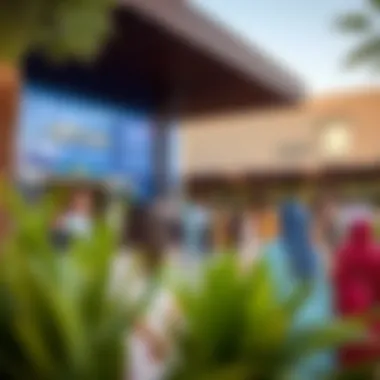
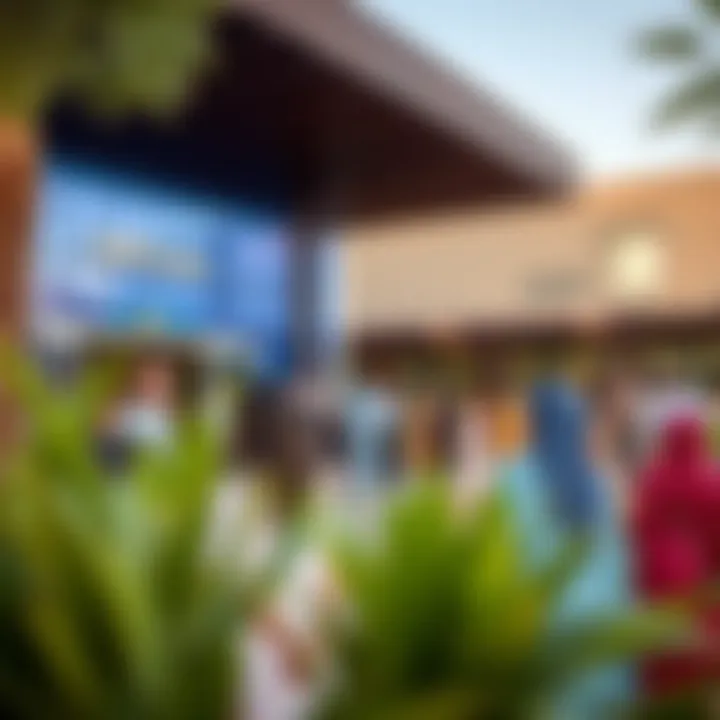
Meraki in the Dubai Real Estate Landscape
The concept of Meraki finds its truest embodiment in Dubai's real estate arena, where creativity and passion manifest not just in bricks and mortar but in the very essence of the living spaces being created. This philosophy underscores the power of intent and personal investment in every project. It's about more than just constructing buildings; it's about crafting environments that resonate with soul and heart.
Dubai has evolved immeasurably, transitioning from a humble fishing village to a global hub for trade and tourism. In this metamorphosis, Meraki plays a pivotal role, fostering unique designs that reflect a deep sense of place. Developers who embrace this ethos often differentiate their projects in a saturated market, which brings us to a deeper understanding of how Meraki shapes the real estate landscape.
How Meraki Influences Real Estate Development
When we examine the implications of Meraki on property development, we're not just looking at aesthetics but at a holistic approach. This methodology prioritizes functionality, sustainability, and community engagement. Imagine a building not as a structure, but a living entity, each brick infused with the passion of those who envisioned it.
- Enhanced Design Elements : Meraki encourages architects and developers to think outside the box. Rather than generic blueprints, we see bold and innovative designs that tell a story about the community it serves.
- Sustainability Practices : Developers increasingly lean on eco-friendly materials and practices, aiming for sustainable living conditions. This is about more than meeting regulations; it reflects a deep concern for the environment, promoting a greener lifestyle for residents.
- Community-Centric Spaces : The philosophy of Meraki compels developers to create spaces that cultivate connections among residents. Parks, communal areas, and local businesses are not just afterthoughts; they are integral to the plan, encouraging social interaction and a sense of belonging.
Case Studies of Meraki-Inspired Developments
Several developments in Dubai exemplify this Meraki philosophy, each telling its own unique tale of purpose and creativity. One striking example is the Dubai Creek Tower, designed not just to be the tallest structure but a beacon of inspiration.
- Dubai Creek Tower
- The Sustainable City
- Jumeirah Beach Residence (JBR)
- Conceptualized as a symbol of the future, it's more than an architectural feat. The design melds modern aesthetics with elements reflecting the rich cultural heritage of the region.
- This development aims to foster local growth while boosting tourism, placing an emphasis on its role as a community centerpiece.
- This project is a testament to sustainable living. The layouts are designed to facilitate an eco-friendly lifestyle, balancing luxury with responsibility. It embodies the essence of Meraki by considering the well-being of its residents and the environment.
- Features include solar energy, hydroponic farms, and communal hubs that encourage neighborly connections, illustrating that living can be both luxurious and sustainable.
- A vibrant area that exemplifies Meraki in its integration of lifestyle amenities, from beach access to culinary delights. It's where the sparkle of city life meets the serenity of the sea.
- The design is not only about luxury apartments; it's about fostering a dynamic community where both residents and visitors can enjoy the essence of Dubai living.
In summary, the influence of Meraki on Dubai’s real estate landscape cannot be overstated. It cultivates spaces that are not just for habitation, but for lifestyle enrichment. This infusion of creativity and personal commitment ensures that real estate in Dubai continues to reflect an ambitious vision, blending tradition with innovation.
"When developers pour their heart into their projects, the result transcends construction, producing spaces that resonate with life."
In an ever-evolving market, understanding the Meraki philosophy is key for investors looking to identify properties that offer not just financial value, but an enriching lifestyle experience.
Cultural Integration through Meraki
The Cultural Integration through Meraki represents a vital theme when considering the lived experience in Dubai. This concept emphasizes how the Meraki philosophy transcends mere aesthetics and tangible developments, embedding itself into the very fabric of community life and engagement. As Dubai blossoms into a melting pot of cultures and ideas, the Meraki approach fosters an environment where individuals can connect authentically, creating a sense of belonging.
Building Community Connections
Meraki aims not just at individual expression but at cultivating connections among residents. Establishing community ties is paramount. When developers embrace this ethos, the resulting environments are far more welcoming and interactive. Think of neighborhoods in Dubai where people gather in communal spaces, share meals, and engage in local events.
- Community Spaces: Parks, community centers, and pedestrian-friendly areas are more than just physical spaces. They serve as hubs of interaction. For example, a well-planned community park might offer picnic areas, playgrounds, and spaces for yoga classes, creating opportunities for families to bond.
- Local Events: Residents often come together for regular events such as farmers’ markets or cultural festivals. Such gatherings allow people to share their stories and traditions, enriching the neighborhood with diverse cultural expressiveness.
- Support Systems: A strong community underpinned by Meraki fosters networks of support. Neighbors looking out for each other creates a warm atmosphere, which is especially significant in a cosmopolitan city like Dubai.
Celebrating Diversity in Design
When it comes to designing spaces, celebrating diversity means incorporating various cultural influences into architectural styles and community layouts. Dubai's skyline is a testament to this, exhibiting designs that honor not just UAE heritage but also global inspirations. This plurality in design nurtures an inclusive environment where everyone sees a reflection of their own background.
- Architectural Styles: Buildings often blend traditional Islamic architecture with modernist aesthetics. For instance, the juxtaposition of the Burj Khalifa’s sleek lines with the ornate details seen in local mosques represents a perfect harmony of history and contemporary vision.
- Public Art: Murals and sculptures throughout the city showcase the work of both local and international artists, telling stories that resonate with a multitude of cultures. This visual celebration of diversity encourages discussions and reflects the community's spirit.
- Inclusive Spaces: Designing for inclusivity also means making spaces accessible for all. From wheelchair ramps to sensory-friendly environments, thoughtful design showcases how Meraki can manifest in practical ways, enhancing the experience of every resident.
Meraki, therefore, does not merely symbolize hard work; it reflects a dedication to creating environments where everyone can thrive collectively. This is particularly essential in a city as dynamic as Dubai, where diverse cultures interact daily. Integrating community and celebrating diversity through design shapes not only living spaces but enriches life itself, laying a stronger foundation for future generations.
Sustainability and Meraki
Sustainability has become a buzzword in recent years, and for good reason. It reflects a growing awareness of our responsibilities toward the environment and future generations. In the context of Meraki and the dynamic setting of Dubai, it takes on unique significance. Incorporating sustainability within the Meraki philosophy means focusing on more than just aesthetic value; it embraces a holistic approach to living and working. This is about nurturing spaces that genuinely reflect the spirit of those who inhabit them while concurrently respecting our planet.
Eco-friendly Architecture
Eco-friendly architecture is not just an architectural trend in Dubai; it's a movement deeply tied to the Meraki way of living. This style of building emphasizes materials and designs that reduce carbon footprints while also enhancing the well-being of those who enjoy these spaces. For instance, you can see buildings adorned with green roofs or solar panels that harness the power of the sun, reflecting the essence of Meraki—putting oneself fully into the craft.
- Natural Materials: The use of sustainable materials like bamboo, reclaimed wood, or recycled metals in construction are excellent examples. They embody the idea that buildings should communicate a sense of place and purpose.
- Energy Efficiency: Designs featuring high-efficiency windows and insulation technologies ensure that energy consumption is minimized, leading to reduced bills for residents.
- Water Conservation: Rainwater harvesting systems and xeriscaping—a style of landscape design that reduces or eliminates the need for irrigation—are increasingly becoming part of Dubai's architectural identity.
By embracing eco-friendly architecture, developers not only adhere to global sustainability standards but foster communities that are in harmony with their surroundings. This practice aligns with Meraki since there’s a dedication to creating spaces that respect both people and the environment.
Meraki Initiatives Supporting Sustainable Living
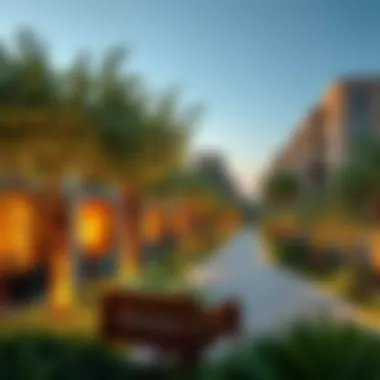
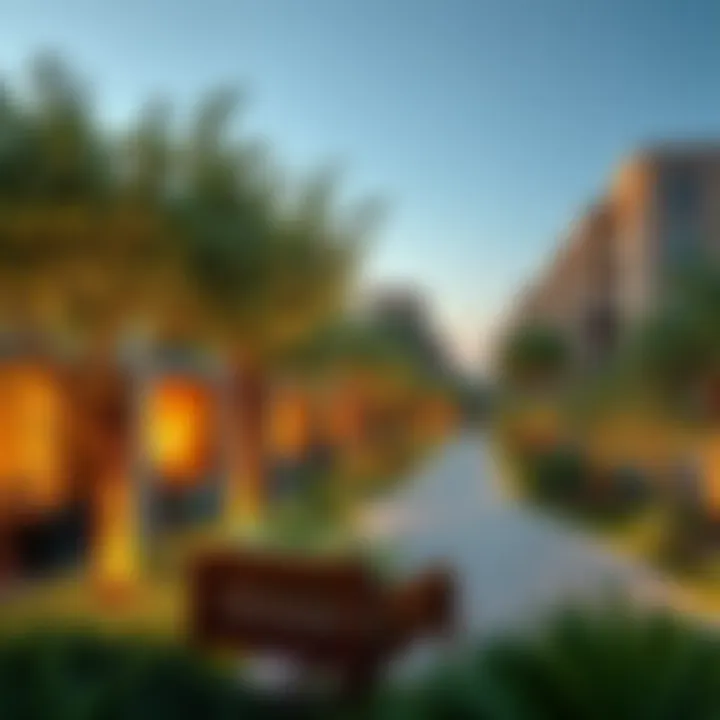
In Dubai, various initiatives exemplify the Meraki spirit through sustainable living practices. These go beyond mere compliance with regulations; they reflect a deeper ethos that values conscientious living.
- Community Gardens: Initiatives to establish urban gardens in residential areas lead to more than just greenery. They offer a venue for community bonding, involving local residents in planting, maintaining, and harvesting, which exemplifies Meraki's core tenet of unity and participation.
- Workshops and Education: Many community centers and organizations now conduct workshops focused on sustainable practices, like composting or eco-friendly DIY projects. It empowers residents with knowledge and skills that reflect their personal investment in the environment.
"Sustainability is not just a goal but a lifestyle choice that embodies the essence of Meraki. Each individual contributes to lasting change through daily decisions."
- Green Building Certifications: In recent years, the Dubai government has recognized the importance of sustainable practices. Programs encouraging developers to create green buildings are gaining traction, offering certifications that underline a commitment to environmental stewardship.
These initiatives signify a forward-thinking trend in Dubai real estate, merging the concept of Meraki with actionable sustainable practices. Investors and homebuyers are drawn to these projects because they not only hold potential for significant returns but also promise a lifestyle that prioritizes environmental mindfulness.
As the real estate landscape in Dubai continues to evolve, the integration of sustainability within the Meraki philosophy is likely to grow, bridging the gap between luxurious living and ecological responsibility.
The Role of Design in Enhancing Living Spaces
Design transcends mere aesthetics; it encapsulates a holistic approach towards creating environments that resonate with the essence of Meraki. The Dubai landscape, marked by its architectural prowess, serves as a canvas for this philosophy. By infusing a personal touch and functional aesthetics into living spaces, design becomes a transformative element that enhances both the physical and emotional experiences of its occupants.
Element of Personal Touch in Architecture
Personal touch in architectural design refers to the individuality that each project brings forth. In Dubai, this goes beyond just the physical structure; it includes the stories, emotions, and creativity embedded in every corner. When developers consider how inhabitants will interact with their spaces, they inherently adopt the Meraki approach—a commitment to infuse life and personality into stone and steel.
For instance, a residence designed with a keen eye on the culture and heritage of Dubai can resonate incredibly well with the community. Think of the use of traditional Arabic design elements, like mashrabiya screens that allow for privacy while letting in light. These not only serve functional purposes but also add an element of storytelling, weaving the past with the present.
"The personal touch in architecture transforms a building into a narrative, engaging the senses of those who pass through its space."
Homebuyers today seek not just a roof over their heads, but a space that reflects their identity and lifestyle. Integrating elements such as local art installations, community gathering spots, and eco-friendly materials plays a significant role in fostering a sense of belonging. This is particularly relevant in Dubai, where residents hail from diverse backgrounds. Spaces that celebrate this diversity through design naturally enhance community connections and life experiences.
Functional Aesthetics in Property Development
A well-designed space balances beauty and utility, showcasing what is known as functional aesthetics. This principle is incredibly critical in Dubai's fast-paced real estate market, where the demands of modern living require that homes are not only visually stunning but also practical.
Developers are increasingly considering how living spaces can adapt to the needs of their residents. For instance, open-plan layouts facilitate a flow between rooms, making homes feel larger and more connected. This is particularly important in urban settings where living space can be at a premium. Additionally, elements like modular furniture and clever storage solutions are integrated, ensuring that spaces remain both beautiful and functional.
Another aspect to consider is the incorporation of technology into design, creating homes that are smart and efficient. Features such as energy-saving appliances and automated systems not only meet practical needs but also contribute to a broader trend of sustainable living, a vital factor in today's market.
Investors and property managers must therefore understand the significance of these elements in property development. The inclusion of functional aesthetics can contribute to higher property values and attract discerning buyers who recognize the value of thoughtful design.
Investing in Meraki-Inspired Properties
Investing in Meraki-inspired properties in Dubai means more than just buying a piece of real estate; it’s about engaging with a philosophy that emphasizes the importance of passion, creativity, and personal investment in every aspect of life. This article section dives into the compelling reasons behind the growing trend toward investment in these thoughtfully designed spaces, assessing how they enhance both lifestyle and value over time.
Identifying Lucrative Investments
Identifying lucrative investments in the realm of Meraki-inspired properties involves thorough research and a keen eye for the nuances that define this emerging market. Investors should consider a few crucial aspects:
- Community Focus: Developments that reflect Meraki often put a strong emphasis on community building. Properties situated in cohesive neighborhoods usually see stable demand and appreciation over time.
- Cultural Integration: Look into how well the property incorporates local culture and social dynamics. Unique designs that resonate with the diverse demographics of Dubai often attract a wider range of buyers.
- Sustainable Practices: Investments in properties featuring eco-friendly elements, from energy-efficient systems to sustainable materials, can yield long-term savings and increase market value as sustainability becomes a priority for buyers.
- Design and Aesthetics: Aesthetic appeal is crucial. Properties that showcase exceptional design ethos—punctuated by creativity and personal touch—tend to garner admiration and higher resale values.
"In the world of real estate, the value often grows where imagination meets execution. Meraki is that bridge."
By keeping an eye on these elements, investors can uncover profitable opportunities in the growing market of Meraki-influenced properties.
Risks and Rewards in the Market
As with any investment, navigating the landscape of Meraki-inspired properties comes with its own set of risks and rewards, which are crucial for investors to understand.
Rewards:
- High Demand and Niche Appeal: Properties that encapsulate the Meraki philosophy are attractive to discerning buyers, including expatriates and international investors, thus fostering high demand.
- Enhanced Living Experience: Buyers are increasingly prioritizing quality of life and unique living spaces over sheer size or conventional design, making Meraki properties particularly desirable.
- Potential for Appreciation: Given the emphasis on high-quality design and community, such properties may experience significant appreciation over time, delivering financial returns on investment.
Risks:
- Market Volatility: Like any other real estate market, Dubai provides its fair share of ups and downs. Investors ought to stay informed on market trends and economic indicators.
- Emerging Standards: The Meraki trend is relatively new; as standards evolve, some developments may not keep pace, leading to potential depreciation.
- Investment Costs: Some Meraki properties can come with a premium price tag due to their unique concepts and designs. Understanding the intrinsic value versus market demand becomes vital.
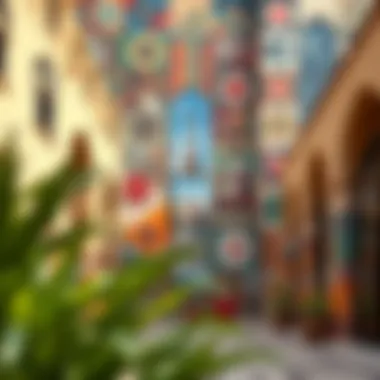
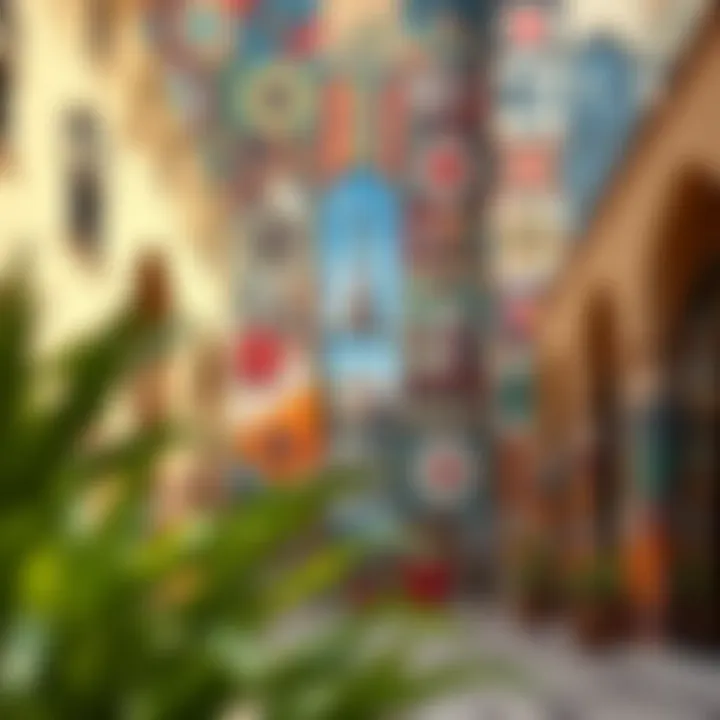
Investors must weigh these risks against the rewards, and knowing when to leap or step back can make all the difference in capitalizing on the Meraki experience in Dubai.
Overall, investing in Meraki-inspired properties isn't just a transaction; it’s an opportunity to embrace a lifestyle and elevate the living experience in a city known for its dynamic architecture and diverse culture. For more insights and up-to-date information, resources such as Wikipedia and British Council can provide valuable context about the region's evolving real estate landscape.
Lifestyle Enhancements through Meraki
In the tapestry of Dubai's real estate landscape, the Meraki philosophy stands out as a beacon of creativity and personal engagement. This approach doesn't simply elevate buildings and structures; it fundamentally enhances the lifestyle of those who inhabit these spaces. The lifestyle benefits tied to Meraki extend beyond aesthetic appeal. They touch on community, well-being, and a genuine sense of belonging that fosters strong relationships among residents. The focus on quality of life provides significant opportunities for investors and homebuyers who are looking for more than just a property—they seek a community that resonates with their values and aspirations.
Quality of Life in Meraki Communities
Meraki communities are designed with one's quality of life in mind, promoting a harmonious balance between living, work, and leisure. The integration of nature, thoughtful design, and engaging social spaces contributes to an environment where people thrive. For instance, parks and recreational areas purposely dotted throughout the community encourage outdoor activities, bringing families together and fostering friendships.
- Holistic Design: The layout often reflects fluidity that connects living spaces to the outdoors. For example, balconies tend to merge seamlessly into gardens, offering residents immediate nature access right from their living rooms.
- Community Engagement: Places like community centers or art spaces prompt residents to participate in events, workshops, or simply gather, creating connections that enrich daily life. These gatherings might include knowledge-sharing sessions or local farmers' markets, where everyone can interact over fresh produce.
- Health and Well-being: With dedicated cycling paths and walking districts, these neighborhoods promote a physically active lifestyle, which is paramount in a city known for its fast pace. Access to fitness centers and meditation parks can enhance mental well-being as well, allowing residents space to unwind amid the bustling urban environment.
Culinary and Artistic Offerings
The culinary and artistic landscape of Meraki-inspired communities in Dubai brings a splash of color and flavor that caters to diverse taste profiles and preferences. Food and art are essential elements of local culture, and their coexistence in these neighborhoods enriches the community tapestry.
- Diverse Dining Experiences: From Michelin-starred restaurants to vibrant street food markets, the availabilities of culinary delights offer something for everyone. An example is the local favorite, Al Fahidi Street, where rich Emirati flavors mix with international cuisines. Residents find an endless exploration of tastes right around the corner, celebrating the idea that food is not just about sustenance, but also about connection among the community.
- Artistic Expression: Local art galleries and public installations enhance the visual appeal and stimulate creativity. Public murals often tell stories, reflecting the rich heritage of Dubai. These pieces invite dialogue and introspection, captivating residents and visitors alike. Residents frequently participate in art workshops, further blurring the lines between creator and spectator.
The cultural offerings embody the essence of Meraki, where passion meets the practice, creating environments that are not just lived in, but truly experienced.
"A space is never just bricks and mortar; it is the heart of the community that beats within it."
As more developers embrace this philosophy, lifestyle enhancements fill each corner of Dubai’s real estate, shifting the paradigm toward a way of life rather than merely a residence.
Future Trends in the Dubai Real Estate Market
The real estate landscape in Dubai is evolving faster than a desert storm. Understanding future trends in this dynamic market isn’t just for enthusiasts; it’s crucial for investors, homebuyers, and property managers alike. Keeping a pulse on these trends can offer a myriad of benefits, like making informed investment choices and fostering connections within the community. With the ongoing changes in consumer behavior and the impact of technology, these shifts are more important than ever.
Evolving Preferences Among Buyers
The appetite of buyers in Dubai is not what it used to be. A few years ago, buyers often sought luxury high-rises with splendid views. Now, the focus has shifted to more sustainable and community-oriented living options. People want spaces that feel like home rather than just another property investment. Mixed-use developments are gaining traction, where residential, commercial, and recreational spaces intertwine, offering convenience and a vibrant lifestyle.
A noticeable trend is the growing desire for green spaces. Buyers are increasingly prioritizing properties that incorporate parks and gardens, as they seek to escape the urban rush. Additionally, features such as open-air spaces, terraces, and communal gardens have become attractive selling points. In neighborhoods like Dubai Marina and Downtown Dubai, developments that emphasize eco-friendliness through the use of sustainable materials and energy-efficient technologies are witnessing higher demand.
Buyers are also becoming more discerning, placing a premium on size and functionality over mere aesthetics. Family-oriented layouts are trending, with multipurpose rooms and home office spaces gaining importance, catering directly to the rise of remote work.
Technological Integration in Property Management
Technology isn't just a concierge service; it's the backbone of modern property management. The integration of smart technology in real estate is revolutionizing how properties are managed and maintained. Smart home systems that allow homeowners to control heating, lighting, and security via their smartphones have moved from luxury to a standard expectation.
Moreover, the rise of proptech—property technology—is streamlining operations for property managers. Digital platforms for tenant communication, maintenance requests, and rent collection have made managing properties more efficient. This means less hassle for property managers and more satisfaction for tenants. Properties incorporating such technologies not only attract tech-savvy buyers but also ensure higher rental yields.
The implementation of blockchain in the real estate sector is another exciting development. This technology enhances transparency and security in property transactions, streamlining the buying and leasing processes. With decentralized ledgers, buyers can verify property ownership and track historical data without the usual bureaucratic labyrinth.
In summation, the future trends in Dubai's real estate market reflect a fundamental shift towards sustainability and technology-driven solutions. By aligning their offerings with these evolving preferences and technological advancements, investors and developers can remain ahead of the game, effectively tapping into the pulse of a city forever transforming.
The End
The conclusion of our exploration into the Meraki philosophy within Dubai’s real estate context serves as a reflective lens on several pivotal themes. First and foremost, the Meraki philosophy—imbued with the essence of pouring oneself into one's work—illustrates an intricate interplay between personal passion and professional execution in property development. This connection emphasizes the necessity for investors, homebuyers, and property managers to recognize not only the monetary aspects of real estate but also the emotional and cultural threads that enhance the living experience.
Reflecting on the Meraki Philosophy
Delving into the Meraki philosophy reminds us that real estate is more than mere transactions; it's about creating spaces that resonate with purpose and identity. When developers embrace this ethos, they inspire innovation in community building and sustainable practices. Notably, integrating elements like art and greenery transforms concrete structures into thriving ecosystems, enhancing residents’ quality of life. Examples abound in Dubai, where residential areas are deliberately designed to foster connection and creativity.
A profound appreciation for the localized essence of Meraki encourages a two-fold benefit:
- Investment Appeal: Properties well-embedded in community values and aesthetics tend to appreciate more robustly.
- Lifestyle Satisfaction: Residents engaging in thoughtfully designed environments report higher satisfaction and belonging.
The Continuing Evolution of Dubai's Real Estate
Looking ahead, the evolving landscape of Dubai's real estate encapsulates a dynamic shift influenced by the Meraki philosophy.
Several factors are contributing to this transformation:
- Technological Advancements: The integration of smart technologies leads to efficient property management and enhanced tenant experiences. Imagine smart home features that not only ease daily living but also significantly reduce energy consumption—the epitome of contemporary sustainable living rooted in Meraki.
- Market Adaptability: Investors are increasingly attuned to the desires of a new generation of buyers, who prioritize inclusivity and sustainability. Properties imbued with a sense of local identity and ecological mindfulness stand out in a competitive market, suggesting that adhering to Meraki principles may yield substantial dividends.



